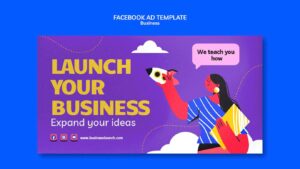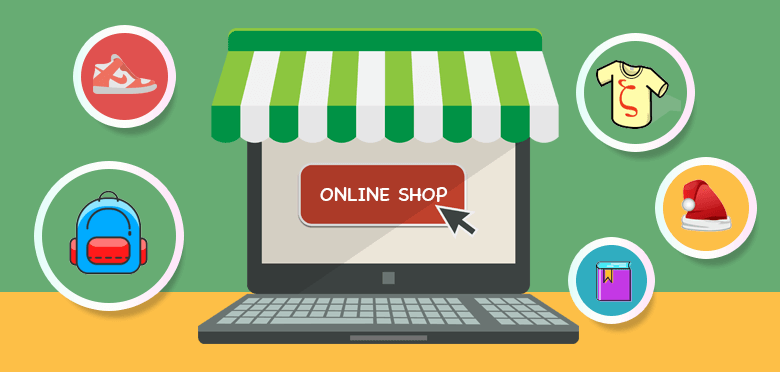How to Run Facebook Ads and Grow Your Business 2024.
- Introduction
- Importance of Facebook Ads in business growth
- Overview of what the article will cover
- Why Facebook Ads?
- Facebook’s massive user base
- Targeting capabilities
- Cost-effectiveness compared to other platforms
- Understanding Facebook Ads Manager
- Overview of Ads Manager
- Key features to know
- Why it’s essential to familiarize yourself with the platform
- Setting Clear Goals for Your Ads
- Identifying your business objectives
- Defining KPIs (Key Performance Indicators)
- Choosing the Right Audience
- The importance of knowing your audience
- Custom Audiences and Lookalike Audiences
- How to use Facebook’s audience targeting features
- Creating Engaging Ad Content
- The power of visuals in Facebook Ads
- Writing compelling ad copy
- Best practices for calls-to-action (CTAs)
- Selecting the Best Ad Format
- Different ad formats available (single image, video, carousel, etc.)
- Choosing the right format based on your campaign goals
- Budgeting for Facebook Ads
- How to set a budget
- Daily vs. lifetime budgets
- Bidding strategies (manual vs. automatic)
- Running A/B Tests
- What is A/B testing?
- The importance of testing different variables
- How to analyze the results
- Optimizing Ad Performance
- Understanding key performance metrics
- How to tweak your campaign for better results
- The role of audience insights
- Using Facebook Pixel
- What is the Facebook Pixel?
- How to install and use it for tracking
- Retargeting with the Facebook Pixel
- Leveraging Retargeting Campaigns
- What is retargeting?
- Why retargeting is so effective
- Setting up retargeting campaigns in Facebook Ads Manager
- Analyzing Ad Results
- What metrics to focus on (CPC, CTR, conversions)
- How to interpret your data for better decision-making
- Scaling Your Facebook Ads Campaign
- When to scale your ads
- Strategies for scaling successfully
- Common pitfalls to avoid when scaling
- Conclusion
- Recap of key points
- Encouragement to experiment and refine strategy continuously

How to Run Facebook Ads and Grow Your Business
Facebook Ads have become an essential tool for businesses looking to increase their reach, drive sales, and grow their brand. Whether you’re a small startup or an established company, Facebook Ads offer an effective and relatively affordable way to target specific audiences and achieve your marketing goals. In this guide, we’ll walk you through everything you need to know about running Facebook ads and leveraging them to grow your business.
Why Facebook Ads?
Facebook boasts over 2.8 billion active users worldwide, making it one of the largest social platforms available. This massive user base means there’s a high chance your ideal customer is on Facebook, regardless of your industry. Moreover, Facebook Ads allow you to tap into its advanced targeting features, which enable businesses to reach highly specific audiences based on demographics, interests, behavior, and more.
Cost-Effective Advertising
Compared to traditional advertising methods, Facebook Ads offer a cost-effective way to reach a large audience. With options for setting budgets that work for you, whether you want to spend a little or a lot, you’re in control of your spending.
Understanding Facebook Ads Manager
The Facebook Ads Manager is where you create, manage, and track your ads. It’s essential to familiarize yourself with its interface and features to get the most out of your campaigns.
Some key features include:
- Campaign Creation: The ability to create ads tailored to your objectives.
- Performance Tracking: Detailed analytics on how your ads are performing.
- Budget Control: Set daily or lifetime budgets for your campaigns.
Take some time to explore the platform so you understand its functionalities before launching your first ad.

Setting Clear Goals for Your Ads
Before jumping into ad creation, it’s critical to outline what you hope to achieve. Are you looking to drive website traffic, increase brand awareness, or generate sales? Your goals will influence every aspect of your ad campaign, from the type of ad you create to the budget you set.
Common objectives include:
- Increasing website visits
- Boosting social engagement (likes, shares, comments)
- Generating leads
- Driving online sales
Define clear KPIs (Key Performance Indicators) so you can measure your success accurately.
Choosing the Right Audience
Facebook’s ability to target specific audiences is one of its most powerful features. You can create Custom Audiences based on user data you’ve collected (like email lists), or Lookalike Audiences, which help you reach people similar to your current customers.
Targeting options include:
- Location: Target people in a specific city or country.
- Age and Gender: Advertise to people within a certain age range or gender.
- Interests: Reach users based on their hobbies or interests, such as fitness, travel, or cooking.
Accurate audience targeting ensures that your ads are shown to people most likely to engage with them, maximizing your ad spend.
Creating Engaging Ad Content
Once you know your audience, it’s time to create content that resonates. Facebook is a visual platform, so prioritize high-quality images or videos to capture attention. Accompanying the visuals should be concise, compelling ad copy that communicates your offer clearly.
Best Practices for Ad Content:
- Use high-quality visuals: Blurry or pixelated images will deter users.
- Write clear, compelling headlines: Keep it short but engaging.
- Include a strong CTA (Call-to-Action): Phrases like “Shop Now” or “Learn More” work well to drive action.

Selecting the Best Ad Format
Facebook offers various ad formats, including:
- Single Image Ads: Simple but effective.
- Video Ads: Great for storytelling or showcasing products.
- Carousel Ads: Allow users to swipe through multiple images or videos in one ad.
- Collection Ads: Best for mobile users, allowing them to browse your product catalog.
The format you choose should align with your campaign objectives. For example, if you’re launching a new product, a video ad could demonstrate its features, while a carousel ad might be better for showcasing multiple products.
Budgeting for Facebook Ads
Facebook gives you the flexibility to set a daily or lifetime budget for your campaigns. A daily budget limits your ad spend per day, while a lifetime budget controls your spending over the entire campaign.
You’ll also need to decide on your bidding strategy:
- Automatic Bidding: Facebook sets your bid to get the best results at the lowest cost.
- Manual Bidding: You have more control over how much you pay per action (like clicks or impressions).
Test both strategies to find what works best for your business.
Running A/B Tests
An essential aspect of running successful Facebook ads is A/B testing, where you test two variations of an ad to see which performs better. You can test different headlines, images, CTA buttons, or even audience segments.
After running the test, analyze the data to determine which version produced better results. Regular testing and refinement lead to better-performing ads over time.
Optimizing Ad Performance
Once your ad is live, monitoring performance is crucial. Track metrics such as:

- CPC (Cost Per Click)
- CTR (Click-Through Rate)
- Conversions
If your ad isn’t performing as expected, you can tweak the audience, adjust the copy, or modify the budget to see improvements.
Using Facebook Pixel
The Facebook Pixel is a piece of code that you install on your website to track user actions. It helps you measure the effectiveness of your ads by tracking what happens after someone clicks on your ad.
You can also use Pixel for retargeting, showing ads to users who visited your site but didn’t convert.
Leveraging Retargeting Campaigns
Retargeting is a powerful tactic in Facebook Ads. It allows you to reach people who have already shown interest in your brand by visiting your website, interacting with your ads, or following you on social media.
These audiences are often more likely to convert since they are familiar with your brand.
Analyzing Ad Results
When analyzing the results, focus on key metrics like:
- Cost Per Conversion
- Return on Ad Spend (ROAS)
- Impressions vs. Engagement
Use these insights to make data-driven decisions and refine your future campaigns.
Scaling Your Facebook Ads Campaign
Once your campaigns are running profitably, it’s time to scale. You can do this by increasing your budget, expanding your audience, or running multiple campaigns targeting different segments.
However, be cautious when scaling—adjust gradually to ensure your results remain consistent.
Conclusion
Running Facebook ads is a powerful way to grow your business, but success requires careful planning, testing, and optimization. By setting clear goals, targeting




